Tabasco Style Fermented Hot Sauce
August 21, 2014 | Updated June 06, 2022
As an Amazon Associate I earn from qualifying purchases.
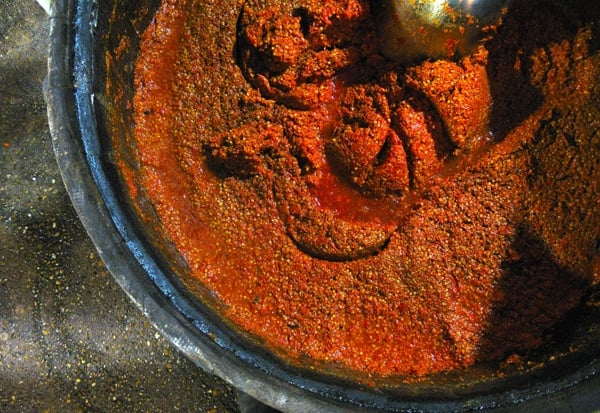
I am a Tabasco man, always have been. Sure, I love lots of hot sauces, but for me the alpha and omega of pepper sauce is Tabasco. What I didn’t know until I visited their plant was that it is a fermented hot sauce.
This slow fermentation makes sauces like Tabasco something more than just heat and vinegar, something more refined and mellow. I had no idea what that something was until I got a chance to visit Avery Island, Louisiana, and meet the McIlhenny family face to face.
Touring the plant, I was shocked to learn that the recipe for Tabasco is not some closely guarded secret. They’ll gladly tell anyone who asks what it is: Tabasco peppers, 2 1/2 percent salt, vinegar… and time. Lots of time. Winemaker-style time. Tony Simmons, the company’s CEO, walked me through it.
The Tabasco chiles are chopped up, mixed with salt mined right from the island itself, then poured into old oak barrels to ferment in a barn for up to five years, although most of the mash is fermented only (!) three years.
They then mix the mash with distilled vinegar (they used to use white wine vinegar) and let this pickle for a month, mixing all the way. Finally, they strain out the pulp and seeds and bottle the sauce.
I was fascinated by this. Aged in oak? For three years?! Damn. Gauntlet thrown. One I will gladly pick up.
Two years later, here’s how it went.
I decided to not even try to replicate Tabasco Sauce exactly, because why would I want to? Even if I succeeded, I can buy the stuff easier at the supermarket. I’d use the method, with different chiles, to make my own fermented hot sauce. Rather, two sauces: One red, one green.
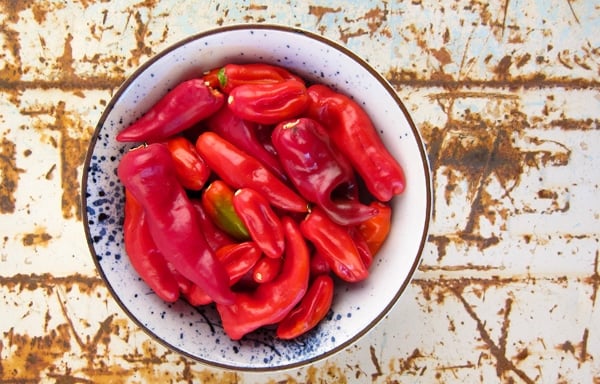
I grew a lot of chiles that year, so I used an eclectic mix of serranos, Tabascos, ripe padron chiles, and a few Thai chiles tossed in for good measure. Yes, I know doing this makes this sauce unrepeatable, but so be it. No vintage of a wine is exactly repeatable either, and since fermented hot sauce keeps almost as long as wine, it’d be fun to play with annual vintages.
I waited until late September 2012 to harvest all my chiles, and I grabbed both the red and green.
I stemmed them all and chopped them roughly, then tossed them in a food processor with that critical 2 1/2 percent salt — this is enough to protect the chiles from bad bacteria but not enough to prevent fermentation by the good bugs.
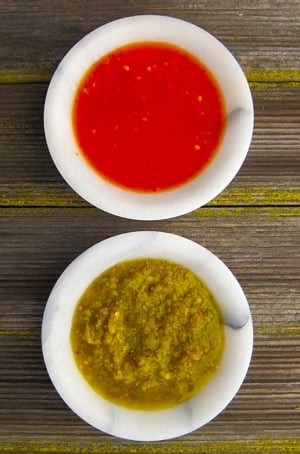
Into quart Mason jars they all went. Within a day they were fermenting, with an acrid, slightly yeasty smell that was something like a cross between Mace and a loaf of bread. Not that unpleasant, actually. I stirred the mash every day and let it breathe. After about 10 days things settled down, so I moved the jars into my salami fridge, which is a cool 55°F. But before I did that, I grabbed some toasted oak cubes I had from winemaking and tossed them in. Instant oak barrel!
And then I forgot about my hot sauce. For two full years. OK, that’s not totally true. Every few months or so I’d check on them, and once in a while a film of mold would grow on the surface; this happened three times. I just picked it off and called it good. After all, we’re dealing with chiles and salt here, both of which are pretty inhospitable ingredients to any truly bad wee beasties.
Finally, earlier this year I decided to make my sauce. I stared at that awesomely fermented mash, which was at once mellow and smooth yet muy picante, if such a thing can exist. I just couldn’t discard it. So I pureed it even smoother and added a little xanthan gum to stabilize it.
The result is a lovely hot sauce. Tangy from the fermentation, hot but not overbearing (a result of the mix of chiles I used), vinegary and a bit salty. It’s not Tabasco. It’s something different. Something… better? Perish the thought.
Fermented, Tabasco-Style Hot Sauce
Ingredients
- 3 1/3 pounds chile peppers, about 1.5 kilos
- 1 ounce kosher salt, about 37 grams
- 2 cups water
- 3 ounces oak cubes
- 4 cups white wine vinegar
- 1 teaspoon xanthan gum (optional)
Instructions
- Roughly chop the chiles and compost the stems. Blitz the chiles in a food processor or blender with the salt and water until you get a rough paste or slurry, depending on how much moisture there is in the peppers themselves. I keep the seeds in the chiles, but if you want a milder sauce, remove them.
- Put the mash into quart mason jars and cap them loosely. "Burp" the caps at least once a day to let out escaping gases and let air in. The chiles will ferment like this for at least a week, and sometimes up to 3 weeks. When the chiles settle down, add the oak cubes, distributing them evenly throughout the jars. Tighten the lids and store the jars in a cool, dark place. I kept mine in my salami fridge, which is 55°F. A basement is fine, as would a fridge. Tabasco keeps their mash barrels at ambient temperatures, which in Louisiana can top 100°F. I am working on a batch fermented this way now, and I see no reason it won't work. Don't let the mash freeze, however.
- Keep the mash like this no less than 3 months, and up to 2 years. When you are ready to finish the sauce, mix the mash with the vinegar.
- You now have two choices: You can do what Tabasco does and return the mix to the jars, shake them every day for a month and then strain out the pulp and seeds. Or, do what I do and keep all that pulp, which will give the sauce body and thickness. If you choose my method, you will need to really blend the sauce and stabilize it -- otherwise the sauce will eventually separate and will need to be shaken up before each use. To do so, dissolve the xanthan gum in 2 tablespoons of water and add it to the blender. Blend for a solid minute. Let the sauce rest for 1 hour before bottling so any trapped air in sauce (from the blending process) can escape. Bottle and store. The sauce will keep for a year or more.
Notes
Nutrition information is automatically calculated, so should only be used as an approximation.
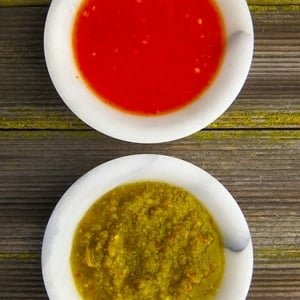



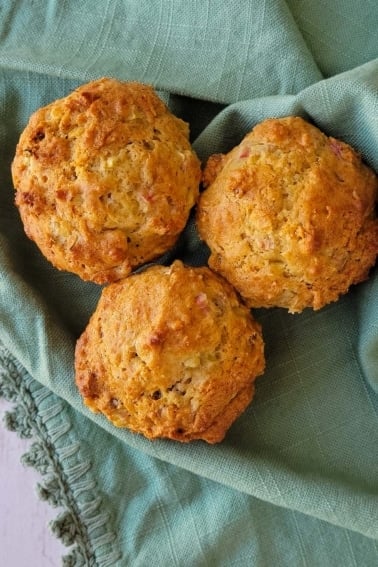
Hank,
Does roasting the pepper hurt the process? It’s almost Hatch Chile season.
Ted: Nope. It’ll be extra good!
Do the peppers start out green and turn red?
Mike: All peppers start out green.
I wanted to comment and thank you for this recipe as your recipe has formed the basis for all my fermented hot sauces and from it I have started fermenting large amounts of chilies. I live in Thailand which has a surprisingly limited selection of chilies to choose from.
The tropics would seem to be a place great for growing chilies but the sun is too intense and there are a bazzilion ways a chili plant can die via insects here.
So I use red Thai chilies which are much hotter than tabasco or jalapeño. Turns out great, and I use it on pizza, wings etc.
Ocasionally I can get jalapeños here and I have tried using those little nuclear prik kee nu chilies using your recipe proportions. Prik kee nu chilies are hotter than the typical red and green thai chilies and much smaller. Didn’t have a great flavor but may try a mix of them and the Thai chilies to up the heat at some point.
Again thanks for this!
Do you need to store in the fridge once complete or is it shelf stable?
Misty: It’s shelf stable.
Do you add yeast to begin the fermentation process?
Daniel: Nope. It goes by itself.
I would like to try and make it in a barrel, any experience
Wow. Just wow. I am inspired. I love that you went all in on this sauce, including the gardening. Maybe I can make my own version! Thanks for the story and the recipe.
Thanks!
Made this with a big bunch of Tabasco peppers I had. Used 2% sea salt, and blended for a couple of minutes. It took a couple of days before it started fermenting, but once started, it went to town. It finally settled down after a week or so and I added some charred oak chips I’d made from a live oak I’d trimmed. Left it for three months and ran it through a food mill earlier today. I added 20% by volume of rice vinegar, and put the wood chips back in and plan to leave it for a month. I tasted it before putting it up and man, this is good! Beats Tabasco in my opinion. Now I need to figure out how to make Tabasco Chipotle . Ha! Thanks for the instructions!
I fermented a ton of chilis i had grown this summer. it tasted amazing. I bottled them, capped them and left them on the counter. Is that safe, or should I place them into the fridge? a few bottles have slight white layer on the top 🙁
Mary: They’re fine to eat, but that mold will occur at room temperature. I skim it off and put the sauce in the fridge.
Thanks for this! I actually ran across it last year and just tonight I made a batch of sauce from my imported New Mexico peppers that I smoked and then fermented 90+ days. It’s a green sauce.
I wanted to point out that a food mill is a great way to separate seeds/flesh if so desired. Then save the pulp and soak it in a mason jar full of avocado oil for a few months, strain & use it for sautéing.
Thanks again for your recipe!
I’m gonna use ghost peppers and Carolina Reapers in mine. I also have some habanero and jalapeño peppers to throw in. Im not sure about the salt. I have 32 oz of peppers. Not cut yet. The ratio calls for .625 oz of salt. Correct??
Jim: Go by weight. 2 to 2.5% salt is what you want. And DAMN, that will be some HOT sauce!!
One of my friends grows a large variety of peppers, including the super-hots, which he eats like candy. We swapped some of our garden bounty and while I use a lot of peppers for cooking and preserving, I’m not sure what to do with a pound of ghost, scorpion and chocolate morugas. Google isn’t much help, and I’m wondering if you have any suggestions.
Jan: A pound of ghost, scorpion and morugas?!? Um… I’d weaponize them. Would be too hot for me to eat!
Thank you for the great information on Tabasco sauce is I have been looking for such a recipe I am going to use the white wine vinegar
Your description says 2.5 % salt but the recipe calls for 2 % which one is it ?
James: I’ve settled on 2% because I get more fermentation. Tabasco does 2.5% and ages longer.
Have you tried to make a hot sauce with lemon or lime juice (citrus)? Like the vinegar, it has a low pH so it should (might) prevent bacteria. I like the taste of tabasco but not the taste of vinegar so much.
Paul: I’ve used lemon juice and it works.
Hi Hank. Is washing the peppers not advised ?
Dick: I wash them only if they are visibly dirty.
Eric, grilling the peppers will kill any wild yeast found naturally on the peppers. You may want to add some type of yeast to get things going before mold hits first.
I used this recipe quite successfully with Thai chilies since I live in Thailand. Yesterday had a different situation where my jalapeños were about to go bad. Some had developed a little bit of mold so I washed them thoroughly , cut off the nasty parts, and grilled them.
Now some of you might say, why not just buy some new ones? Well, jalapeños are not easily found in Thailand. 🙂
Some of the outside of the chilies were blackened,and then I threw them into a blender added salt ,water, blended them completely, and then put it into a mason jar.
So far since then, which is been overnight I have not seen any bubbling from the fermentation process. Wondering if the grilling of the Chili’s change them in someway that fermentation is not possible or will not be visible to me. Thanks in advance for your help!
Hey just wondering the amount of oak chips to chilli mixture you used??
Dan: Not too many, just a small palm-full per quart.